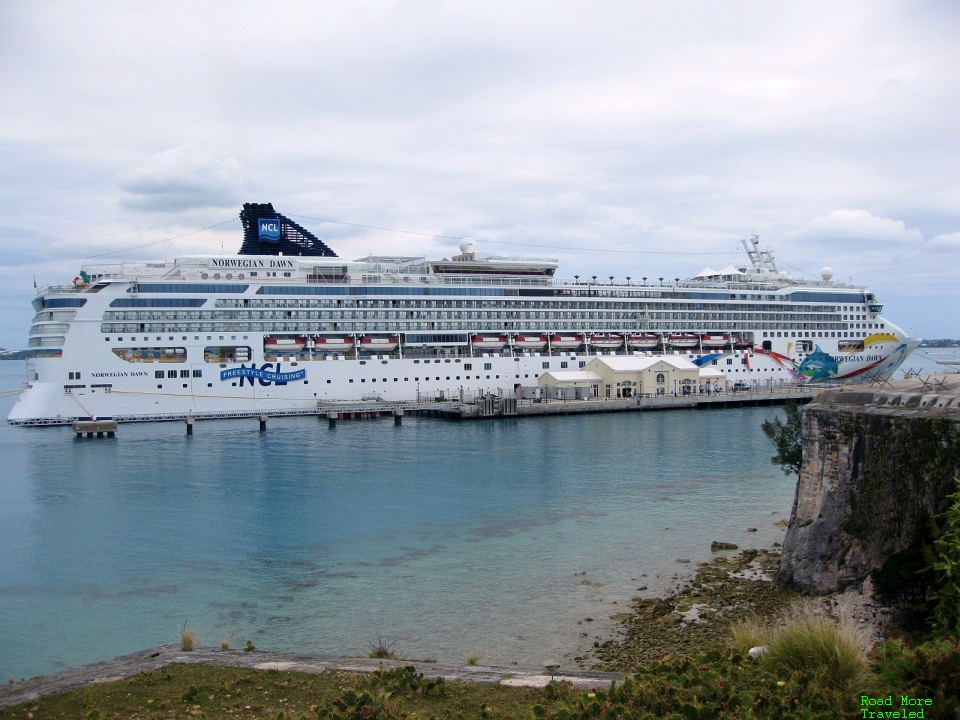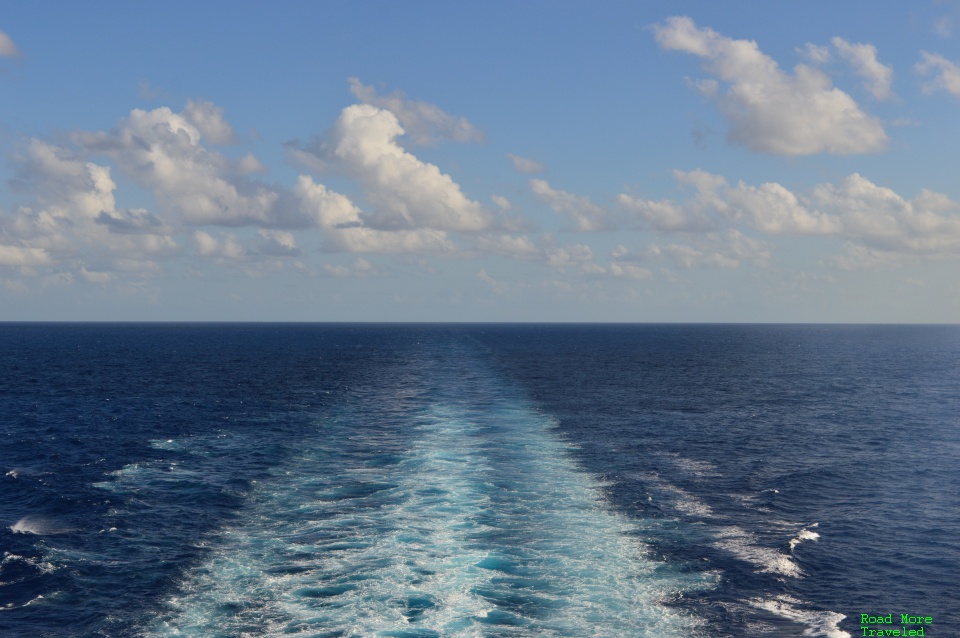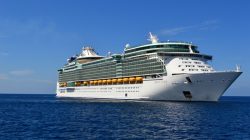We spend a lot of time talking about airlines and hotels here at Travel Codex. But, we don’t talk much about cruises. Well, fear not – here’s a handy dandy beginner’s guide to cruises, with everything you wanted to know about floating vacations.
Beginner’s Guide to Cruises – Choosing the Right Cruise Line
First, which cruise line should you choose? There’s many cruise lines out there, and you’ve likely seen many a catchy tagline on TV ads. I usually like to differentiate the cruise lines in the following categories. Note that I’m excluding river cruises from this post. Those provide an entirely different experience from traditional cruise ships. To try it yourself, consider reading this post with 6 TIPS FOR YOUR NEXT WESTERN CARIBBEAN CRUISE.
Budget Mass Market – these are your big cruise ships with a lower price point, and generally advertise to a younger clientele. You do get your standard cruise ship amenities, like the endless buffet line. Many also have “gimmick” features designed to attract younger cruisers and families, like Royal Caribbean’s artificial rock climbing wall. Staterooms are usually smaller, with a lower standard of amenities. Cruise lines in this category: Carnival, Costa, Norwegian, Royal Caribbean.
Upscale Mass Market – these ships are slightly smaller, though “small” means 2,000-3,000 passengers. Prices run a little higher than the budget lines, though the trade-off is a more luxurious ship and more personalized service. These cruises also target an older demographic. Cruise lines in this category: Celebrity, Cunard, Holland America, MSC, Princess.
Luxury All-Inclusive – if you’ve cruised before, you might have received brochures from a “luxury” cruise line. At first blush, the prices might give you a little sticker shock. They are often several times the price of a mass market ship. But, the ships are substantially smaller, and typically are all-inclusive. In other words, no upcharges for things like specialty dining, or for alcoholic beverages. Cruise lines in this category: Azamara, Crystal, Hapag-Loyd, Oceania, Paul Gauguin, Regent Seven Seas, Seabourn, Silversea, Viking Ocean Cruises, and Windstar.
I should also mention Disney Cruise Line, which doesn’t neatly fall into any of these categories. While certainly mass market, it’s the only cruiseline that actively markets to…well, families with kids. From what I gather, the mix of amenities and activities falls somewhere between budget and upscale; however, pricing runs much higher than the budget lines. Caribbean cruises from Port Canaveral, for example, typically run 2-3x higher on Disney compared to Royal Caribbean or Carnival.
So which to choose? It really boils down to your preference on ship size, and how much nickel-and-diming bugs you. In general, the more upscale the cruise line, the smaller the ship, and the more inclusive the fare. After trying out one of the mega-ships in 2017, I’m not really a fan. They’re too big and impersonal, and service tends to suffer. I personally think the 2,000-3,000 passenger ships provide a decent compromise. They feature plenty of amenities, yet are small enough to keep service reasonably personal. Get More Information here for some reliable maritime lawyers who can help you if ever you get injured in a cruise ship!

Beginner’s Guide to Cruises – Choosing Cruise Destination and Length
The cruise lines literally run the gamut when it comes to both cruise length and destination. Most of the major lines serve the same destinations, which is to say, pretty much everywhere. Cruises to the Caribbean, Alaska, and Mexico probably attract most of the attention and advertising here in the states. But there are plenty of other worldwide itineraries out there, including:
- Trans Panama-Canal, usually California or Florida to South America
- Europe, Baltics, and Russia
- Mediterranean, both western and eastern
- Transatlantic crossings
- Northeastern US and Canada
- US/Canadian West Coast
- Bermuda
- Hawai’i
- Japan, Korea, Southeast Asia, and India
- Australia and New Zealand
- Polynesia
Some of your specialty cruise lines hit more “exotic” destinations like Antarctica and Greenland. But prepare to pay a pretty penny for the privilege. Note that many ships operate “back to back” cruises covering multiple itineraries. For example, the same ship might cruise from Istanbul to Rome, then Rome to Barcelona. You can book both cruises if you wish. Pricing varies, however; sometimes, it’s additive (i.e. you pay for two separate cruises). Other times, the cruise line might sell it as one single cruise with some discount off the combined price. You typically see this with longer inter-continental itineraries.
When it comes to picking an itinerary, keep in mind, a cruise lets you have a taste of multiple destinations. But with usually only a single day (typically 8 am – 5 pm) in port, you’re not going to be able to do a whole lot. You usually have time for one shore excursion. Or maybe a couple of tourist sites if you explore yourself. My general advice: cruises make ideal trips if you want to try out a destination, but don’t want to commit to a longer stay. The exception – “expedition” cruises, which focus on a specific area for several days. Bermuda cruises, meanwhile, often give you one full and two half days in the island nation.
As for cruise length, cruises range from 3 days to as much as 150 (yes, really) days. My advice here really applies more to cruise newbies. You’re either going to love cruising, or hate it. There really is no middle ground. For first timers, I usually suggest starting out with a short cruise; for example, a 3-night Caribbean cruise from Florida to the Bahamas. If you love it, great, go with a longer one next time. If you hate it, well, you’re only on the ship for a couple of days.
Honestly, as a veteran of several cruises, I don’t care for the short cruises. 3 nights basically means you board, get settled, then pack up again just as you get comfortable. I personally prefer cruises of 7-10 nights. That gives you enough time to unwind and enjoy the ship, but it’s not so long that you get bored.

Beginner’s Guide to Cruises – Choosing the Right Stateroom
Once you select an itinerary, now comes the fun part – selecting a stateroom. As a general rule, cruise ships offer the following stateroom categories:
- Interior – these rooms typically comprise the smallest rooms on the ship, and have no window. They’re also the cheapest.
- Oceanview – slightly larger rooms with either a porthole or floor-to-ceiling window facing the sea.
- Oceanview with Balcony – standard oceanview room with a small exterior balcony.
- Mini-suite – basically a larger version of the oceanview with balcony. Some include additional amenities like bathtubs, priority boarding/disembarkation, dining reservations, etc. Most mini-suites occupy the higher decks of the ship, allowing for better views from the balcony.
- Suites – the largest and most luxurious rooms on the ship. Besides tons of space, suites typically include butler service, exclusive lounge access, an exclusive concierge, etc. Like mini-suites, suites typically occupy the higher decks of the ship.
Some cruise lines also offer “concierge class” staterooms. Think of these like club level rooms at hotels. Major benefits include a stateroom on a dedicated floor, a dedicated dining room (often with a special menu), and access to a dedicated concierge for shipboard and shore activities.
Obviously, what you choose depends on your travel budget. But in general, my suggestion is, if you have the means, go for a room with a balcony. One of my favorite things to do when cruising is to head out on the balcony when arriving or departing a port and take in the views. Or to enjoy the sunset with a cup of tea. Yes, you can do any of those things up on the pool deck. But I find something special about doing that in the peace and quiet of my own balcony. If you’re cruising to Alaska or through the Panama Canal, definitely pay extra for the balcony. It’s dog eat dog when it comes to securing real estate for the view of the glaciers or the canal crossing. You’ll appreciate every penny you spent for the guaranteed view.

That being said, as reader “coasttal123” notes below, think about how much time you plan to spend in your stateroom. With a small child in tow, the extra room from a balcony or mini-suite comes in handy. On the other hand, if you plan to spend all your time on shore excursions, or at the pool, bar, shopping arcade, etc., perhaps saving money with an interior stateroom makes more sense.
Also note that location within the ship can make a difference. Your best views are midship; you receive better pricing at the forward and aft (rear) of the ship. Some staterooms at the aft end face the rear, providing you a beautiful view of the ship’s wake. You generally feel less vibration on higher decks, but if you get seasick, there’s less motion on the lower decks (midship also helps in this regard). Also keep in mind proximity to elevators and stairs, and major ship amenities such as dining rooms. All cruise lines provide deck plans, so I suggest reviewing that before selecting a specific stateroom. You probably don’t want a stateroom right above or below the disco, for example, if noise disturbs your sleep. On the other hand, a room near the stairs leading to the dining room saves time at dinner.

Booking Direct vs. Booking via Travel Agent
Like other modes of travel, most cruise lines allow you to book direct or via a travel agent. Unlike airlines or hotels, though, booking through a travel agent often yields a better deal. Why? Travel agents sometimes have access to additional discounts or onboard credits. An “onboard credit” is basically like an airline voucher, which you can use to cover onboard purchases. For example, I often use cruise.com to book, and they sometimes offer me an extra $50 of funny money as a repeat customer. Not much, but usually enough to cover most of a soda package for a 7-night cruise. I recommend checking both the cruise line website and a travel agent to see who offers the better overall package.
Also, I’ll discuss this more in a future post, but if you have the Amex Plat, you have access to the Cruise Privileges Program. This provides some additional discounts and goodies, through a select number of major cruise lines.
Either way, you can usually select a specific stateroom at the time of booking. Or, if you want to take a chance, you can book a “guarantee” cabin. This means you’re guaranteed to receive a cabin of a certain category, such as an oceanview with balcony. You don’t get to pick a particular room, though. But you could hit the jackpot and receive an upgrade to a higher category.
If you book through an agent, like the airlines, you can manage your reservation at the cruise line website. This allows you to select dining times, book shore excursions, etc. If you want to change or cancel, though, you must contact the agent if you book through one.
Finally, most cruise lines offer “future cruise promotions” if you book another cruise while still on board. Sometimes the promotion is a discount off the rack rate; other times, it’s onboard credits or reduced rates on beverage/specialy dining packages. If you find yourself enjoying your cruise, might as well stop by and see what the offers are. Typically you only have to put down a nominal deposit. And often, the cruise line lets you put down an “open” deposit, good for 2-4 years, and you can take advantage of the promotional offer as long as you book during that time.
Dining and Beverage Charges
Unfortunately, except for high-end cruises, cruise ships charge extra for a whole lot of stuff. Your basic cruise fare includes the stateroom, “standard” dining, and most shipboard activities and entertainment. You pay extra for shore excursions, soft drinks, alcohol, specialty dining, and certain activities like wine tastings. (Luxury cruise lines often include at least some alcohol in the base fare.) Among mass market lines, Disney is one notable exception as it includes soft drinks for free.
Now, you can defray the cost of upcharges somewhat. First, both the cruise lines and travel agents run constant promotions offering onboard credits. Generally, the higher category stateroom you reserve, the more credit you receive. Second, if you plan to drink a lot of alcohol and/or soda, consider buying a beverage package. Princess, for example, offers unlimited sodas, juice, and mocktails for $9.99 per person/per day. Or, move up to a package that adds espresso drinks for $19.99/person/day. Or go all-out with beer, wine, and cocktails up to $12/serving for $59.99/person/day.
Think carefully about how much you actually plan to use the benefits before buying, though. Last time I cruised with Princess in 2015, sodas cost $2.50 each. Wine, beer, and cocktails averaged about $8 each. Let’s assume you decide to buy the soda package. You’d need to order 4 or more sodas per day to break even. Do the math and make sure it makes sense for you. Note that technically, a beverage package is specific to the person who buys it. In other words, 3 people sharing a stateroom can’t share a single beverage package. In practice, over 9 cruises, I’ve found that wait staff don’t enforce this. When both my wife and I order sodas, they look at my soda sticker and don’t charge for either one. But your mileage may vary.
Important note: bringing aboard your own alcohol is strictly verboten. Ship security will find it, and hold it until the last day of the cruise. (Ditto for any liquor you buy in port.) You can, however, bring your own bottled water; I recommend bringing a bottle or two. The ship usually charges $3-4 a bottle. Once you reach your first port, you can buy some at a supermarket for a fraction of the cost.
Fixed vs. Specialty Dining
Meanwhile, when it comes to dining, there’s two things to consider. First is deciding between “fixed time” dining, or “anytime” dining. Fixed dining simply means you eat dinner in the main dining room at the same time each night. Typically, this means a choice of a 5:30 pm or an 8 pm seating. “Anytime” means you can show up for dinner at any point during dinner service, usually 5-10 pm. (Breakfast and lunch are always on an anytime basis.) With fixed dining, you receive the same table with the same seatmates at the same time, every day; with anytime dining, you may have to wait in line for a table, and may not sit with the same people.
Note that you usually can request either a separate table for your party, or a shared one with others. If you choose anytime dining, you can call to reserve a table earlier in the day. If you don’t, you have to wait in line; you can usually get seated quicker if you agree to share a table. Also note that Norwegian completely eliminated fixed dining several years ago. The “Freestyle” concept includes anytime dining for all cruisers.
So which is better? If you have a large party and/or just don’t like waiting in line or making reservations, go with anytime dining. Personally, I prefer fixed dining. Traveling with the family, the security of the same table each day without a wait comes in handy. Having tried both, I also think the wait staff performs more personalized service with fixed dining. They get to know your preferences, and are usually better at handling special meal requests. On the other hand, if you like partaking in evening shipboard activities, fixed dining gives you less flexibility. Of course, you always have the fallback of the buffet, or specialty dining, discussed below.
“Specialty dining” is a fairly new concept, mostly applicable to mass market cruises. This can be a steakhouse, a health-conscious offering, sushi, etc. (See here for Princess’ specialty restaurant lineup as an example.) Cost typically ranges from $20-50 per person; you do sometimes see fare sale promotions that offer one or two freebies per sailing. Unless you’re getting a freebie or using up some onboard credit, I’ve never really understood this concept. I’ve always gotten plenty of (good) food in the main dining room; I have noticed some reduction in quality and portion sizes since specialty dining became a thing, though. Personally I just don’t see the value in dropping an extra $40 for a steak. I’d rather spend that money in port.

Beginner’s Guide to Cruises – Shore Excursions
Unless you plan to spend all of your port time at the pool, shore excursions are probably the most important part of a cruise. You have three general options for planning time in port.
Book a Ship Operated Shore Excursion
The cruise lines themselves offer multiple shore excursions in each port; these range from a couple of hours for shopping to all-day adventures. When buying from the cruise line, you can apply onboard credits to the cost, which of course reduces your out-of-pocket cost. The ship is also guaranteed to wait for you in case the tour runs late for some reason. The downsides: they cost more, and these are typically large group tours of 40 ore more people. So as you can imagine, you don’t get much time at any one spot, and there’s little opportunity to customize.

Book a Privately Operated Tour
In all larger cruise ship ports, private companies operate tours that compete with the cruise lines. These tours are sometimes cheaper, sometimes not, but are almost always much smaller groups. For example, I’ve booked a tour by ToursByLocals to the Andes in Chile, which included only our family. That gives you a lot of flexibility; the guide provides a suggestion, but you can customize it the way you want within reason. Another option – find the Cruise Critic Roll Call for your cruise (example) and either join a tour group, or try to create one of your own. Tour operators often offer discounts for groups larger than 4 or so. Or you can Google “shore excursions in [X]” and look up local operators in that port. (Here’s an example in Cartagena, Colombia.)
One downside to going private: you obviously can’t apply onboard credits. Additionally, if arriving at a “tender” port, those with private excursions receive last priority for a boat. That means it may take three or more hours just to get off the ship; that typically leaves you with very little time in port. Also, if you go with some local operators or join a Cruise Critic group, you might be stuck paying cash. Finally, remember that the ship will NOT wait for you if you’re running late. Make sure you thoroughly research the operator and pick only reliable guides.

Do It Yourself At the Dock
If you really like winging it, you can just try to hire someone at the dock. As you exit the ship, you’ll typically walk through a gauntlet of taxis and tour operators hawking their services. These can work out well. For example, after Royal Caribbean canceled our scheduled tour in Grand Cayman, mom found a booth selling island tours for $20 a person. And it ending up being a pretty good tour. Often times, you can negotiate a better price; this is especially true if you just want to hire a taxi to drive you around for the day.
Or if you really want to go cheap, you can just get off the ship and walk around the city. My wife and I actually had a nice time doing just this in Manta, Ecuador. The ceviche on the beach certainly was might nice.
The same warnings about private tours apply here. You’re probably going to have to pay cash, and the ship won’t wait for you if you’re late.

My recommendation: it’s generally easy to find reliable private tours these days. They might or might not save you money, but I’ve generally had better, more personalized experiences with them.
Booking Air Travel To and From Your Cruise
I’ll wrap up with a quick word on booking air travel to and from your cruise. All of the major cruise lines allow you to book flights through them. In the past, they just charged a fixed price, and assigned you whatever flights they wanted to. Now, though, it really just works like a third-party booking engine. You select your own flights, and pay the going published rate based on fare class. So why book through the cruise line? If you do, the cruise lines takes responsibility for any flight delays. They become responsible for getting you to the ship, even at the next port, if you misconnect. Otherwise, you’re on your own if you run late.
In general, I advise never never EVER book a flight to arrive the same day your cruise departs. Just don’t do it. I’ve read far too many horror stories of missed cruises due to flight delays. Instead, at a minimum, plan to arrive the night before, and spend a night in town. Many hotels in cruise ports, such as Port Canaveral, even offer cruise packages which include free transportation to the port the next day. If you absolutely must arrive the day of departure, book your flights through the cruise line. Or at least make sure you have travel insurance that will cover your cost to reach the next port.
Final Thoughts
I’ll cover some specific destinations like Alaska, and how to find the best deals on cruises, in future installments. In the meantime, hopefully this helps you select your perfect floating vacation!





